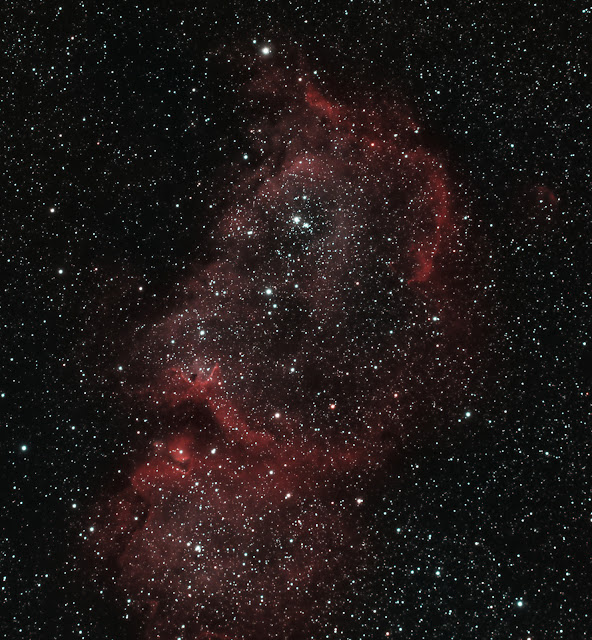Medium Start with the 26c - Part 3
Medium Start with the 26c - Part 3
OK, so you know when you pick something up that you love doing, but have just kind of lost the mojo to do it, and then you get all inspired, rejuvenated and enthusiastic again? Well, that 😁.
Over the last few weeks, I've imaged and processed two targets, but on the second of the targets which I wrote about in my previous post, I finished off by saying that well, to be honest, the image just wasn't good enough.
I'd posted it on my socials and don't get me wrong, I had some lovely comments and reactions to it, but I knew there was more to come from that particular dataset. It was then that I remembered a YouTube video popping up in my subscription feed by Shawn on his VisibleDark astronomy channel. In it, he mentioned some free tools and scripts available for PixInsight users that make creating a pseudo Hubble palette image from data collected using CMOS colour cameras like my 26c. From there, I disappeared into a trail leading me to several corners of the internet where I researched his process of using those tools. This lead me to the author of those tools and his channel called AnotherAstroChannel which in turn lead me to another channel called lukomatico.
In a combination of videos, taking on board their tutorials, I started to put together an amended version of a workflow for PixInsight. Unlike my other workflows though, I wanted to create it specifically for use on nebulae. The more I get to understand PixInsight, the more I learn that not all steps are useful for all targets. The general concept of noise reduction and background extraction is principally the same, but the methods may be different. In other words, one workflow doesn't work for everything. This new workflow is going to take some time to tweak, and I'm still missing a step in it where I need to establish how I tackle remaining gradient left after background extraction. More on that another time perhaps, but the main point being that I've now found a whole new tool set which seems incredibly efficient.
Armed with my newfound knowledge and with time to kill in the wet evenings on the run up to Newtonmas, and with the dataset used in my last post, I decided to have another go at processing the Soul nebula.
Any search engine search will show you dozens if not hundreds of images of any given object imaged by amateur astrophotographers all over the world. I don't really like comparing my work to that of others. I lack much of the experience and skills which others have, but as long as I like what I produce, then that's great. Having said that, it's hard not to be inspired and in this particular case, I like what others have done in their processed images. Earlier, I mentioned that the Soul nebula is high in HA wavelengths and therefor shows up really well in red on finished images. But, that's not to say that an image may be improved by introducing additional colours. If you search the web, there are plenty of tutorials covering how to create a pseudo Hubble palette image from CMOS data taken with a dual/tri/quadband filter. Some of those processes are quite intense and often rely on paid for plugins for software. Now come the true heroes of image processing, those that happily devise ways and share their work for free to help the wider community. Once I have my full process for this type of image sorted out, I will write another post about it and make it available to share. In the meantime though, I now give you the 1st and 2nd attempts at my interpretation of the Soul nebula...
 |
| Version 1 - the image from my previous post following a pretty standard workflow I created a few years ago and have used for most if not all targets since. |
So there you have it. There's so much more to come from these new found techniques and plenty to learn about, but I'm happy with this initial start. My thanks to all the YouTubers whose channels I linked back to earlier in this post. Check them out. There's a huge amount of knowledge and experience to soak up just within those 3 channels.
Clear skies!



Comments
Post a Comment